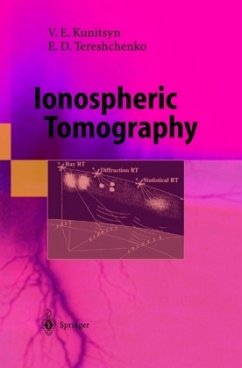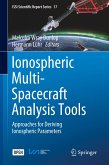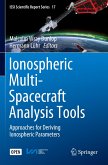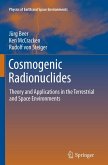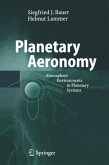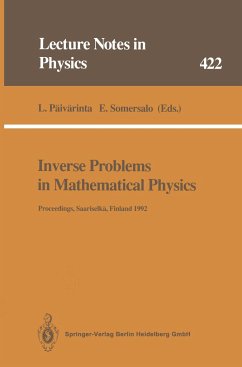The monograph is devoted to a new branch of remote sounding of the iono sphere - ionospheric tomography. Adoption of tomographic methods seems to be an inevitable stage of the evolution of almost all diagnostic systems. Ad vanced techniques for remote sensing and progressive means for data process ing open the possibility of reconstructing the spatial structure of the medium on the base of tomography. In this book, mainly the problems of satellite radio tomography of the ionosphere are discussed, and only one subsection is alloted to optical ionospheric tomography. Modern radio sounding techniques make it possible by means of satellite facilities to probe the ionosphere within a wide range of varying positions of transmitting-receiving systems and to apply tomographic methods. In this connection, in recent years, active tomo graphic investigations of the ionosphere have been done. The purpose of this monograph is to set forth the tomographic methods developed for recovering the 2-D and 3-D structure of the ionosphere and to discuss experimental implementation of these methods. The topic of discus sion is reconstruction of electron density distribution and effective collision frequency. The structure of the ionosphere is known to be quite complex; along with a quasi-stratified background with large scale variations in elec tron density, there are also local irregularities of various scale sizes, including turbulent volumes.
From the reviews:
"Ionospheric Tomography seeks to bring the reader up to the forefront of research into the subject and goes a long way to achieving this goal by providing an extensive bibliography and a detailed mathematical treatment of the key processes [...] Kunitsyn and Tereshenko have produced a solid foundation on which further research activity can build with confidence [...]." (Dr. N. Arnold (University of Leicester), Contemporary Physics 2004, vol. 45, page 353)
"Ionospheric Tomography seeks to bring the reader up to the forefront of research into the subject and goes a long way to achieving this goal by providing an extensive bibliography and a detailed mathematical treatment of the key processes. The book is an invaluable reference tool for any serious student of the subject ... . Considerable care has been taken in the preparation of the text. Kunitsyn and Tereshenko have produced a solid foundation on which further research activity can build with confidence ... ." (Dr. N. Arnold, Contemporary Physics, Vol. 45 (4), 2004)
"This very good book is devoted to a part of ionospheric remote sensing and addressed to third cycle's students or interested researchers. ... This book is worthwhile the price as the expert authors made a great job always keeping the physics in view. ... It is a very good source book at the doctoral level in the related domain." (Jean-Claude Jodogne, Physicalia, Vol. 26 (1), 2004)
"This book provides a comprehensive coverage of tomographic techniques applied to satellite signals to determine ionospheric structure. The theoretical developments are quite detailed, and include valuable discussions of strengths and weaknesses of various methods well-known in the scientific literature. ... This book is primarily aimed at the ionospheric radio research community and because of its comprehensive treatment it should become an important reference, particularly for those using trans-ionospheric radiotechniques." (P L Dyson, The Physicist, Vol. 4 (2), 2004)
"Ionospheric Tomography seeks to bring the reader up to the forefront of research into the subject and goes a long way to achieving this goal by providing an extensive bibliography and a detailed mathematical treatment of the key processes [...] Kunitsyn and Tereshenko have produced a solid foundation on which further research activity can build with confidence [...]." (Dr. N. Arnold (University of Leicester), Contemporary Physics 2004, vol. 45, page 353)
"Ionospheric Tomography seeks to bring the reader up to the forefront of research into the subject and goes a long way to achieving this goal by providing an extensive bibliography and a detailed mathematical treatment of the key processes. The book is an invaluable reference tool for any serious student of the subject ... . Considerable care has been taken in the preparation of the text. Kunitsyn and Tereshenko have produced a solid foundation on which further research activity can build with confidence ... ." (Dr. N. Arnold, Contemporary Physics, Vol. 45 (4), 2004)
"This very good book is devoted to a part of ionospheric remote sensing and addressed to third cycle's students or interested researchers. ... This book is worthwhile the price as the expert authors made a great job always keeping the physics in view. ... It is a very good source book at the doctoral level in the related domain." (Jean-Claude Jodogne, Physicalia, Vol. 26 (1), 2004)
"This book provides a comprehensive coverage of tomographic techniques applied to satellite signals to determine ionospheric structure. The theoretical developments are quite detailed, and include valuable discussions of strengths and weaknesses of various methods well-known in the scientific literature. ... This book is primarily aimed at the ionospheric radio research community and because of its comprehensive treatment it should become an important reference, particularly for those using trans-ionospheric radiotechniques." (P L Dyson, The Physicist, Vol. 4 (2), 2004)

